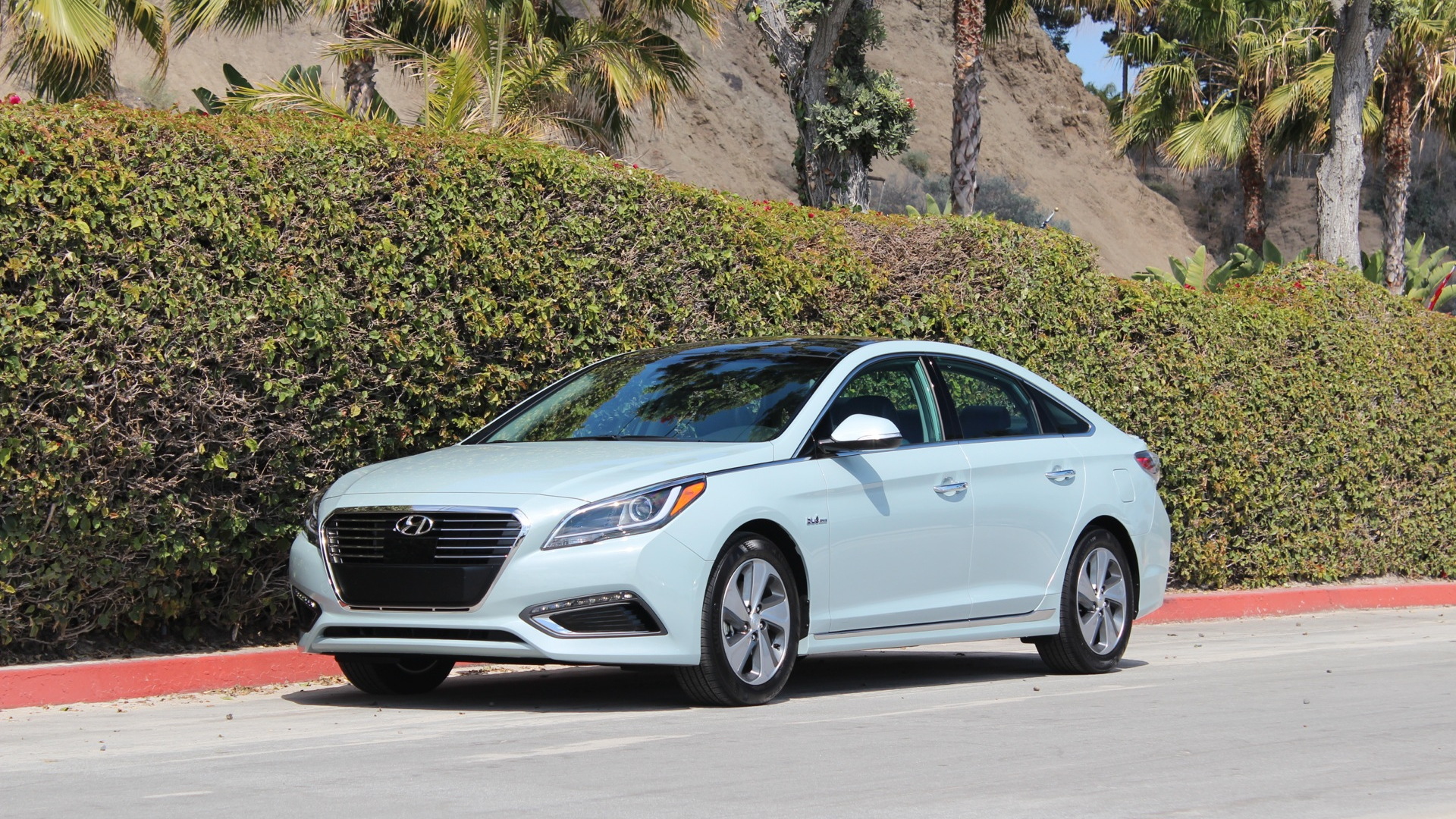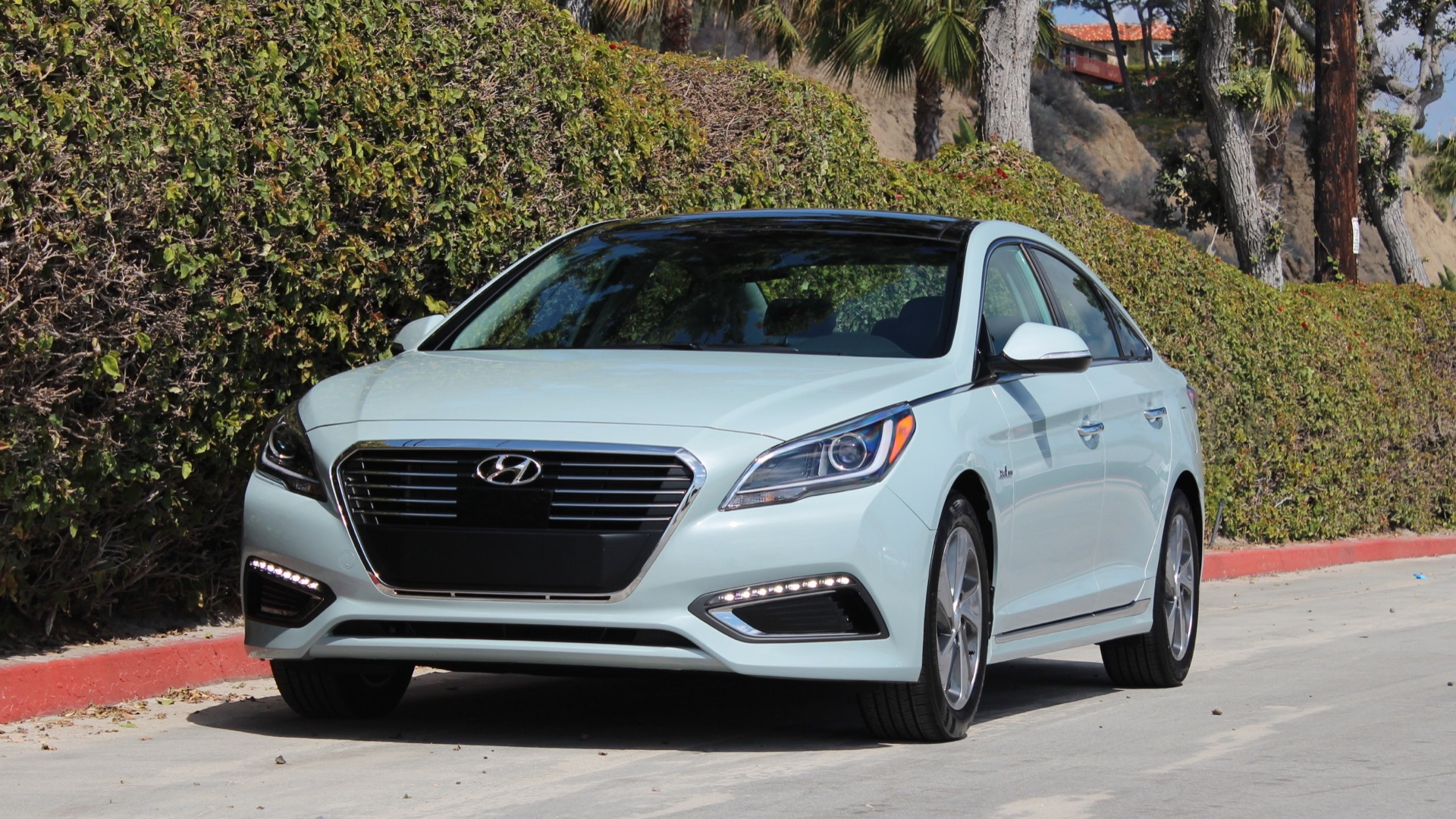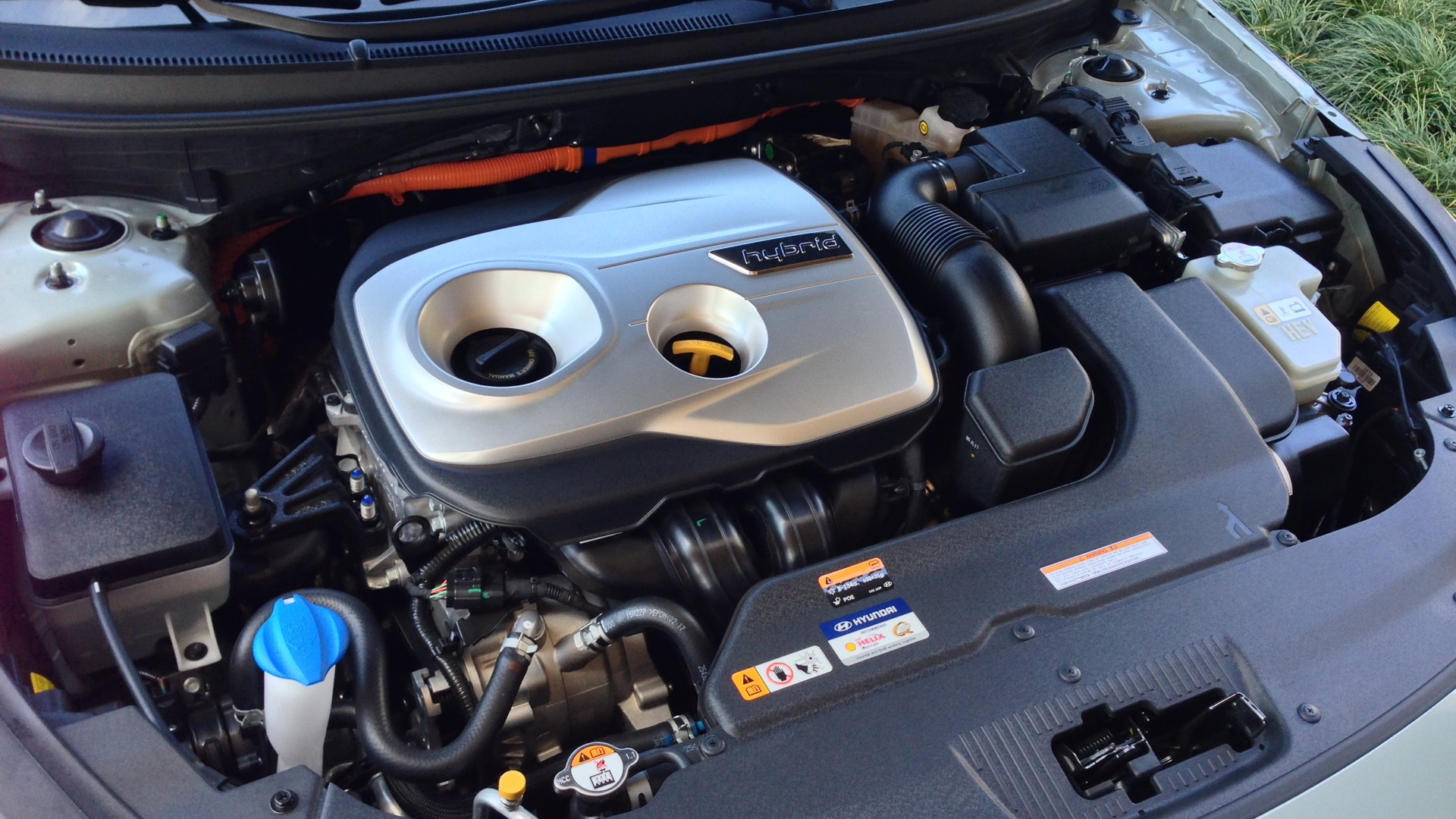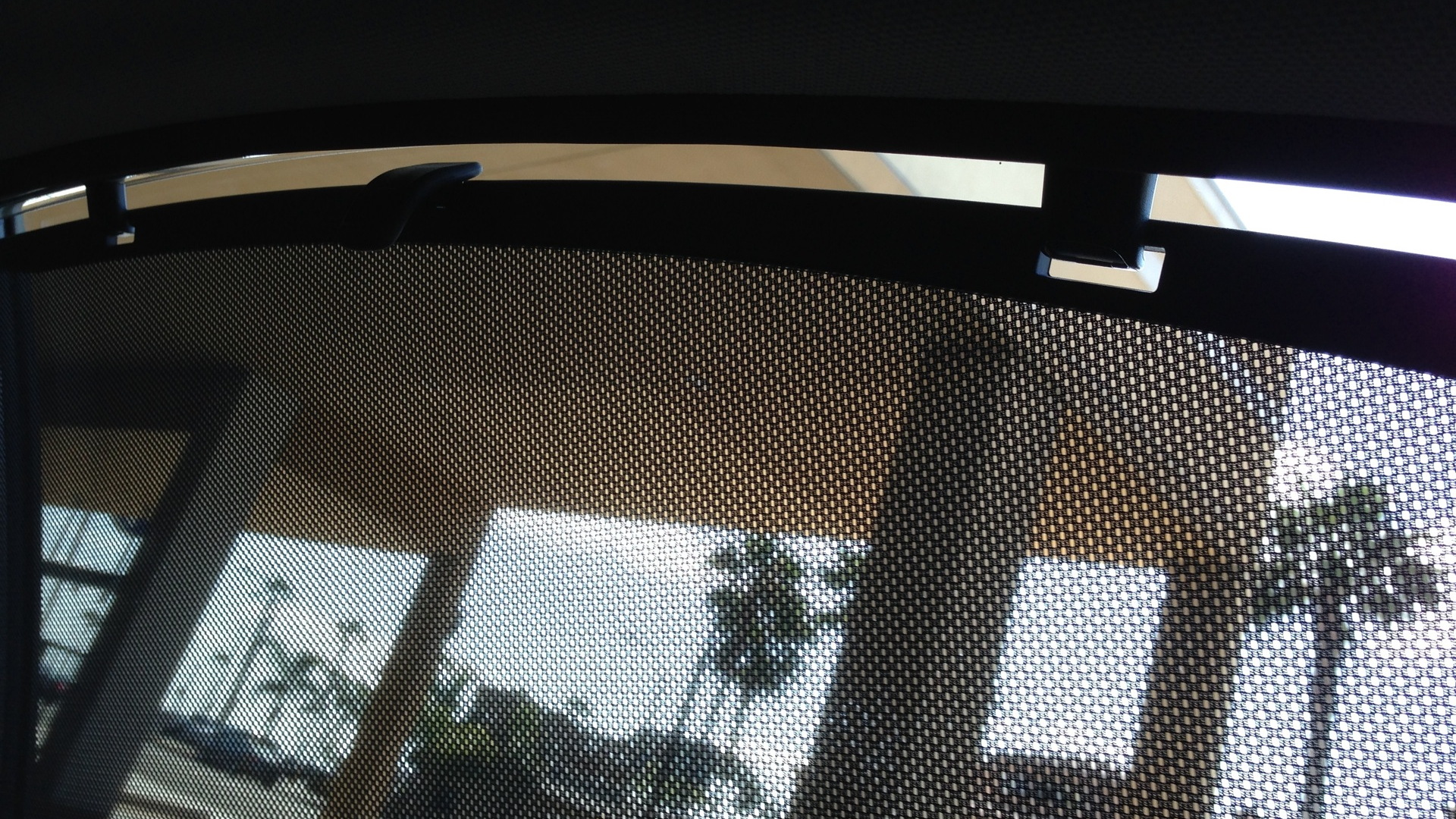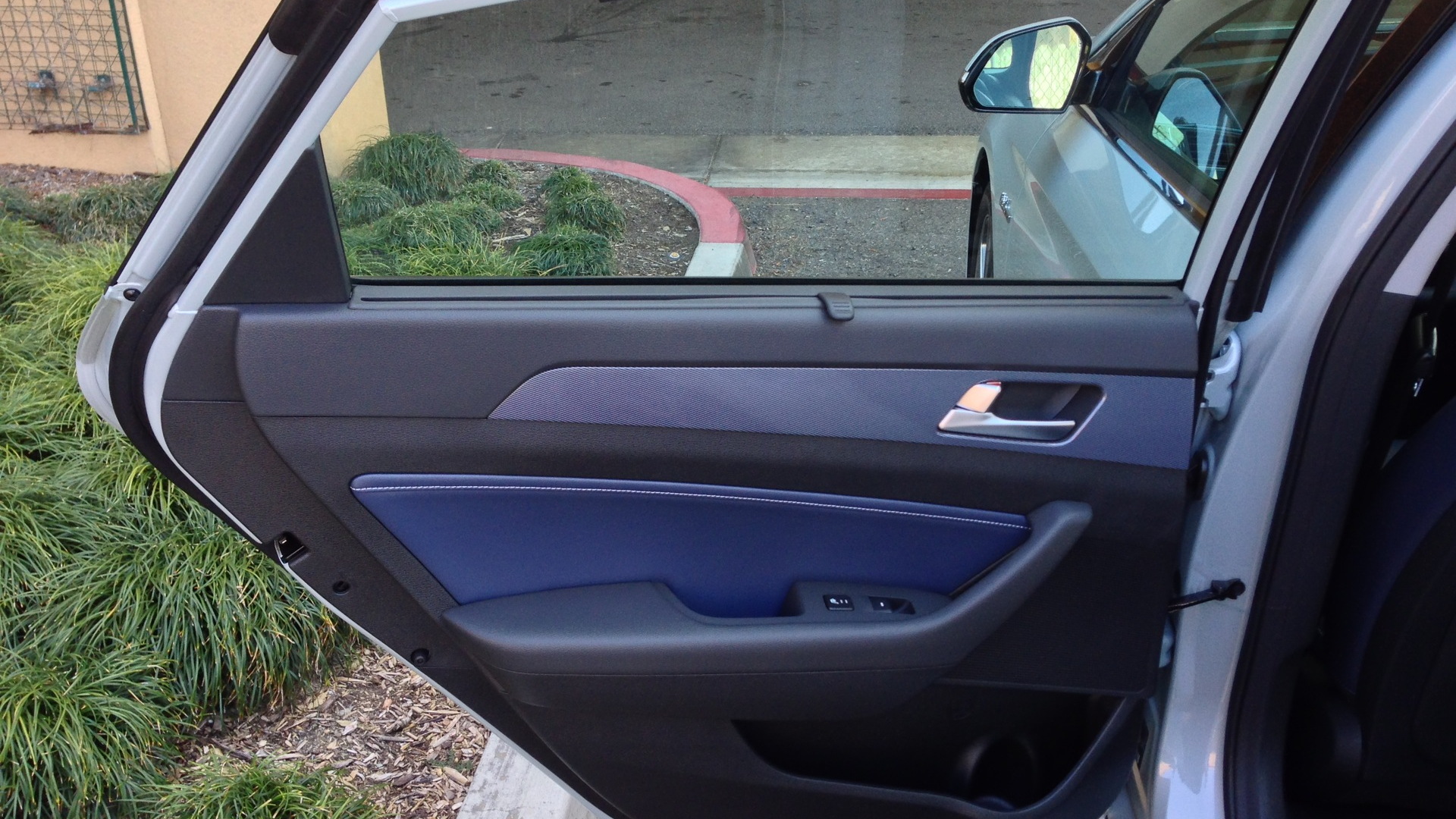What if you could fully restore your charge in a plug-in hybrid, on the fly, just by driving?
It’s a feature that’s unparalleled in mass-market plug-in hybrids—that in the 2016 Hyundai Sonata Plug-In Hybrid you can enter not the charge-sustaining mode that some models have, but a mode that actually regains a full charge.
That energy doesn’t come free, of course. Hitting the button and entering that Battery Charge mode comes at an expense—about 5 mpg, from very informal instant-mpg trip-computer readouts—yet it’s thought-provoking, and far from a gimmick.
ALSO SEE: A Gas Pump Is The 'Germiest Thing' You Touch: Did You Know?
If you know that you’re about to enter Manhattan, for instance, with its miles of creeping traffic, might you think of saving fuel, overall, by recharging as you’re driving on the New Jersey turnpike?
Through the charge-restoring mode, you can essentially bring the battery back to full, from around 15-percent capacity, where it pushes you our of EV mode and into hybrid mode, in just 30 to 40 minutes—albeit at lower fuel efficiency than in normal hybrid mode. That mode allows the hybrid system to run more with the gasoline engine, when it makes sense, for battery charging.
While we weren't able to charge quite that quickly on our drive, we did manage to boost our range, in that mode, from 8 miles to 16 miles remaining in less than 25 minutes.
It's fodder for some armchair calculations about when you could best use all-electric mode and when you’d be better off running in hybrid mode.
And while all this is good fuel for debate (in your comments below), the central point here is that Hyundai has not only introduced a new Sonata Plug-In Hybrid, with a much larger 9.8-kWh battery and class-leading 24-mile all-electric driving range, as well as a much-improved Sonata Hybrid.
DON'T MISS: Next Toyota Prius Hybrid: 40-Percent Thermal Efficiency From Engine, Toyota Says
The Plug-In, by the way, charges in less than three hours with 240V (Level 2) charging, or about nine hours on 110V (Level 1) charging on a household AC outlet (the onboard charger is just 3.3 kW).
Making an existing hybrid system better
Hyundai keeps the fundamental mechanical layout of the previous Sonata Hybrid, but some close engineering attention results in a crop of models that drive better, get better mileage, and are more refined than last year’s car.
First things first: As wondrous as the charge restoring mode is, the Sonata Plug-In Hybrid has a habit that commuters eager to ‘go electric’ most of the time are going to dislike: Just as in the Toyota Prius Plug-In and the Ford C-Max Energi and Fusion Energi, Electric Mode doesn’t necessarily mean that the powertrain is going to stay all-electric.
There’s simply no way to lock out the gasoline engine. You hear about Chevy Volt drivers going months without the gasoline engine starting, but that won’t be the case here, as just taking off a little too quickly from a stoplight or facing an uphill that’s a little too steep will be cause for the four-cylinder engine to fire up.
It’s also a bit frustrating as there’s no gauge you can drive by so as to keep the vehicle in all-electric mode. While the power meter on the left side of the instrument cluster shows a peak efficiency mode up to 40 percent, and a blue arc that extends up to 60 percent, you can make it past 50 percent on the gauge sometimes without turning on the gas engine on some stints of acceleration, while other times it’ll turn on before 30 percent.
CHECK OUT: Electric Car Charging: The Basics You Need To Know
As engineers confirmed, that’s because the system takes into account things like uphill grades, driving style, and accessory use. While you can affect the latter two, you may have hills along your route for which Hyundai decided the electric motor can’t deliver enough torque to conquer. And if you have a short but steep uphill commute, you’ll arrive back home frustrated that you couldn’t use more of your full charge in the process.
No, city and highway mileage aren’t switched here...
Fuel economy figures aren’t yet out for the 2016 Sonata Plug-In Hybrid (tentatively, it earns an EPA Combined 40 mpg). But It only takes a brief look at window-sticker EPA fuel economy figures to anticipate that something’s quite different about these models.
Compared to every other hybrid on the market in the mid-size sedan class, at an EPA-rated 40/44-mpg city/highway, the Sonata Hybrid is the only one with highway mileage figures higher than its city mpg.
That difference, to sum it up, is the Sonata Hybrid’s mechanical layout. It remains the only ‘full hybrid’ sedan to use a conventional six-speed automatic transmission. with an electric motor bringing boost, regenerative braking, or lower-load all-electric propulsion. And while its battery capacity, at 1.62 kWh, is in the same league as rivals such as the Toyota Camry Hybrid, Ford Fusion Hybrid, and Honda Accord Hybrid, its 38-kW (51-hp) electric motor isn’t nearly at the power level of those other models.
The 2016 Sonata Hybrid and Sonata Plug-In use essentially the same layout as previous—a version of the automaker’s so-called Transmission Mounted Electric Device (TMED) hybrid architecture—yet it’s not really a carry-over powertrain in any way. Hyundai’s now carrying its hybrid system forward into the fully redesigned, seventh-generation Sonata; and while this system might not have been particularly smooth or up to the mileage numbers of its rivals the first time around, Hyundai has far better chances with this second try.
Why? Hyundai has completely reengineered this system, and while the transmission might be essentially the same in configuration, they’ve boosted the power to upgraded electrics, expanded battery capacity—and perhaps most importantly for how it drives—completely redone the software governing how the gasoline engine is clutched in and out. Oh, and it’s downsized that gasoline engine, too.
With the 2.0-liter direct-injection four-cylinder engine making 154 horsepower and 140 pound-feet of torque, and the motor system rated at 38 kW (51 hp), the new net power rating for the system to 193 hp. Plug-In Hybrid models, with their higher 50-kW (67-hp) motor, make 202 hp altogether and get somewhat expanded EV operation even in hybrid mode.
Yes, for the Hybrid that’s lower than the previous model’s net 199 hp, but as we found in a first drive in Southern California this past week, all the changes to the hybrid’s powertrain and its unique mechanical layout add up to a different sort of driving experience.
Possibly the best-driving roomy hybrid for faster paces
The Sonata Hybrid is definitely more refined than before, in every way. But also, if you’re one whose commute involves more hills and faster-moving highway stretches, we think it may be the best-driving of the current crop of mid-size hybrids.
All said, the unique mechanical layout of the Sonata Hybrid makes it a completely different, almost exotic flavor in the hybrid market, from behind the wheel. It avoids the booming, ‘motorboating’ sensations that some of these other hybrid systems with their planetary (eCVT) setups evoke. It’s a major advantage. Instead, the six-speed automatic runs through its gears—semi-audibly if the engine’s started, silently if you’re accelerating gently in EV mode. And if you need a quick burst of power, the hybrid starter-generator (HSG) starts the engine up in an instant and splices it neatly into the flow—with that time reduced by 20 percent versus the previous model.
As Yong-Seok Kim, the manager in charge of R&D for ‘eco-friendly’ products, told us, the company has been paying extra effort to “the basics” in its development efforts the past several years—things like steering, braking, and ride—and it shows in the Sonata Hybrid. Highway-speed tracking is now excellent, and you get none of the issues requiring small corrections as you did in the previous car. Likewise, ride quality is more supple, and bumps are less likely to throw the car off course; and brake-pedal action, while probably not as firm as driving enthusiasts will want, is progressive and confident.
In the lower gears especially, the motor system doesn’t just boost; it helps do what a torque converter might do—but better—isolating shift shock and smoothing out those gaps between upshifts, as well as downshifts.
Much better brake regen, thankfully
Hyundai has also rethought regenerative braking, and the result is much more intuitive. Rather than having a setup that ramped up traditional brake initially, then mixed in regen, adding more hydraulic boost again at the end, the new system ramps up regen right away, saving the physical stoppers for the last few feet or for very hard stops.
Both of these models drove lighter than expected. The Hybrid weighs approximately the same as a loaded 2.0T (turbocharged) Sonata Limited. The lithium-ion battery pack helps keep weight down, but it’s also a matter of hybrid components that have been meticulously redone for weight savings and efficiency gains.
The Plug-In Hybrid weighs about 270 pounds more than a comparably equipped Hybrid (loaded Limited to Limited), at about 3,800 pounds total. That’s still a premium of more than 500 pounds over the base 2.4-liter Sonata, but a testament to what engineers have done in fitting battery, fuel tank, engine, and electric-drive components, all into a safe structure.
Packaging is great. The super-compact, 1.62-kWh lithium-ion polymer battery sits where the spare tire used to be, in Hybrids, while the 9.8-kWh battery in the Plug-In Hybrid fits in a stepped-up area at the front of the trunk—eliminating the perfect flat-folding rear seatbacks of the Hybrid but still allowing enough space for a pass-through.
From a styling standpoint, it’s hard to fall in love with the Sonata Hybrid. It feels like it’s playing it safe in a lot of respects—sort of becoming what the Toyota Camry has been, just as the Camry is emerging from a long, least-common-denominator slumber. There are a number of appearance changes in the Hybrid and Plug-In Hybrid versus the standard Sonata sedans, but they’re all rather subtle and mostly there with the goal of improving aerodynamics. Most notably, the front end loses its ‘grimaced’ look by adding different fascia contours, while the headlamp shape (and graphics) is a bit different, and rocker panels and the trunk edge have been reshaped for airflow.
In all, those aero-soothing changes drive the coefficient of drag down to 0.24, versus 0.27 for standard Sonata models.
Inside, the Sonata Hybrid and Plug-In are much more appealing. The swoopy, flamboyant look of the last-generation cars is gone, replaced by a design that’s not at all derivative, but a model of practicality. A big sweeping gauge up top, on the left, where the tachometer would be on non-hybrid models, is the so-called Vehicle Energy Gauge, and it shows the power level you’re delivering as well as how much energy is being recaptured. Down below that, where the engine-temperature gauge would be on non-hybrids, there’s a digital hybrid battery state-of-charge gauge.
Rating the the car—and you—for efficiency
Examples of what you get if you click through the menus of the central infotainment screen include an energy flow diagram, There’s also a histogram, showing an efficiency record in 2.5-minute increments.
You also get rated, with a Driving Style assessment that breaks down the amount of time you spent driving by Economical, Normal, and Aggressive styles.
There’s also a new system called Coasting Guide Control. Set a navigation destination, and before each advised exit, stop, or corner it will advise you on the best time to lift off the accelerator. and start coasting.
That feature, which is claimed to improve fuel efficiency by up to three percent, felt a little half-baked, though, as it would sometimes not advise us to coast at all and at other places where it would advise us to start coasting for uphill exit ramps (as they often are), we likely wouldn’t have made it up the ramp. It doesn’t appear to take topography into account.
The Sonata Hybrid has Eco, Normal, and Sport modes, but it always starts up in Eco mode. Sport mode, in addition to changing upshift points, making the accelerator a lot more sensitive, and ramping up more motor boost on tip-in, allows you access to one lower gear on a full-throttle highway downshift.
Separately, in Plug-Ins, there’s an HEV Mode Select button. With it, you can toggle between three modes: an Electric Mode, a Hybrid Mode, and that Battery Charge Mode.
And so what about mileage? Hyundai is anticipating a Combined rating of 40 mpg for the Plug-In Hybrid. That brings total cruising range for the Plug-In Hybrid, including that 24 miles all-electric, to 605 miles.
According to Dr. Kim, the Plug-In uses up to 95 percent of battery capacity (and the automaker is offering a lifetime warranty on the battery); yet product planner John Shon agreed that the 15 to 17 percent of indicated remaining charge we saw when the system forced us (very smoothly) out of EV Mode was typical. We’re following up with Hyundai on this and will update.
41 mpg, from 18 percent aggression
We saw a trip-computer-indicated 41 mpg, making an effort neither to drive especially mindfully nor in a hotfooted way (it told me I was 18 percent aggressive for one stint), but with the flow of traffic, which took us up near 80 mph at times.
In part because of those weaker electrics, and because the system is built into a traditional transmission with a tall overdrive, the Sonata Hybrid is different than any of those hybrids in that it gets better mileage on the highway than in the city. Based on what we saw in instantaneous fuel economy along our route, and driving experience with both the Camry Hybrid and Fusion Hybrid, we anticipate that the Sonata Hybrid’s real-world highway mileage will be better than that of rival models like the Toyota Camry Hybrid and Ford Fusion Hybrid, while its real-world city-driving mileage will be a bit lower.
That’s in part because of those weaker electrics, and because the system is built into a traditional transmission with a tall overdrive.
That said, Hyundai says that the system can travel at up to 75 mph using only electricity, in both the Hybrid or Plug-In Hybrid. We saw very nearly that in both models, using a very gentle right foot or the encouragement of a long highway slope leading into a level stretch.
And let’s not forget the gasoline engine, which is not entirely the same 2.0-liter that goes into other Hyundai products. There are a number of hybrid-exclusive improvements to push the efficiency envelope even when the engine is running. An electric water pump and variable pressure oil pump both help reduce losses, while an oil warmer, cooled EGR system, and high-energy ignition coil nudge efficiency higher and mechanical improvements to the pistons and ring coating, among other things, help reduce general friction loss.
Will pricing complete the Plug-In’s all-out charm?
If we had to pick a favorite, it’s the Plug-In. Actually, this model drives better. Likely due to the stouter electrics, it seemed smoother and a bit more refined, and when it comes time to make sudden changes with your right foot, even once in HEV mode, the powertrain feels slightly more on its toes than that of the Sonata Hybrid.
While most plug-in hybrid models to date—the Honda Accord Plug-In Hybrid and Ford’s C-Max Energi and Fusion Energi products are the ones that come to mind—have driven somewhat more sluggishly than their counterparts without the charging port, the Sonata Plug-In Hybrid is the exception.
For those who do commute on mostly level ground and have the discipline to keep their right foot very restrained, both the Sonata Hybrid and Plug-In Hybrid show promise in allowing some impressively long electric-only driving. Compared to the Fusion Energi and Accord Plug-In Hybrid, the Sonata Plug-In Hybrid has a larger-capacity battery—9.8 kWh, versus 7.6 and 6.7 kWh, respectively—yet it has a lower-power electric-motor system—50 kW, versus 88 kW and 124kW—which is what allows that 24 miles (or more).
Likewise, the Hybrid model’s 38-kW motor system has a fraction of the output of the motors in the Camry Hybrid, Fusion Hybrid, or Accord Hybrid, yet its battery capacity is more than any of those models. So again, given ideal, light-load conditions and light traffic, you could accelerate lightly and get quite the electric-only results in either model. But fast-moving Southern California traffic didn’t provide that opportunity.
Pricing, of course, will be crucial. Hyundai is anticipating a $4,919 federal tax credit on the Plug-in, and while we’re not sure where that model will land in pricing, the outgoing Hybrid is around $26k.
There’s one final, interesting footnote on this. For now (actually, July), the Sonata Hybrid will be available nationwide, while Hyundai dealerships will stock the Sonata Plug-In Hybrid beginning this fall, only in the ten ‘ZEV Mandate’ states (CA, CT, ME, MD, MA, NJ, NY, OR, RI, VT)—although it’s worth noting that Hyundai says the model will be available by request/order nationwide.
In all, the 2016 Hyundai Sonata Hybrid is no longer the odd one out. The Plug-In, with its surprisingly good performance and Battery Charge mode, makes it perhaps the best mid-size hybrid sedan for those who are 'EV curious' but not fully ready to make the jump.
With much-improved drivability and no-sacrifices packaging, added to the already more pragmatic-yet-plush look and feel that made its debut this past year, the Hybrid is no longer looking like a complement to the lineup but the heart of it.
_________________________________________
